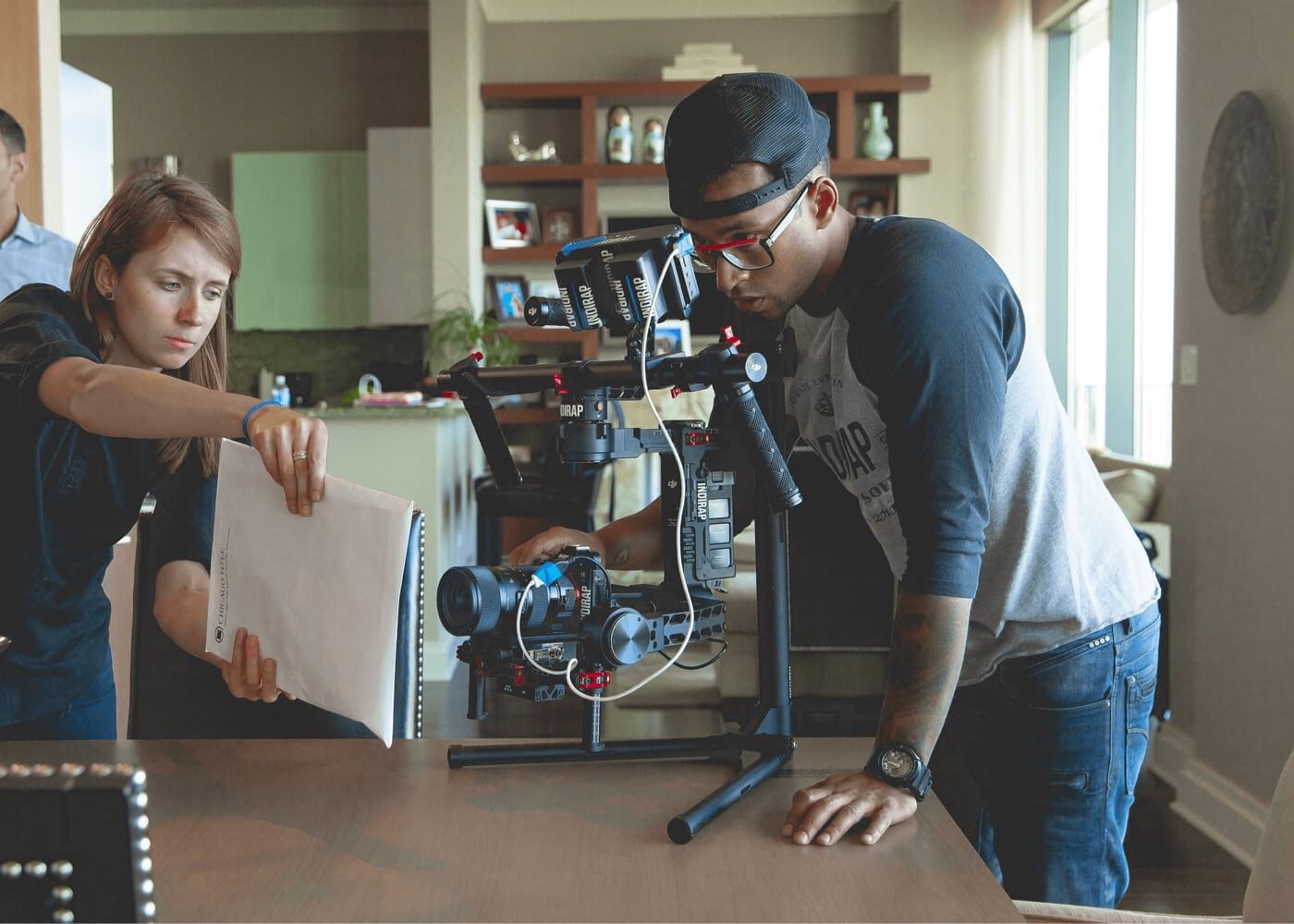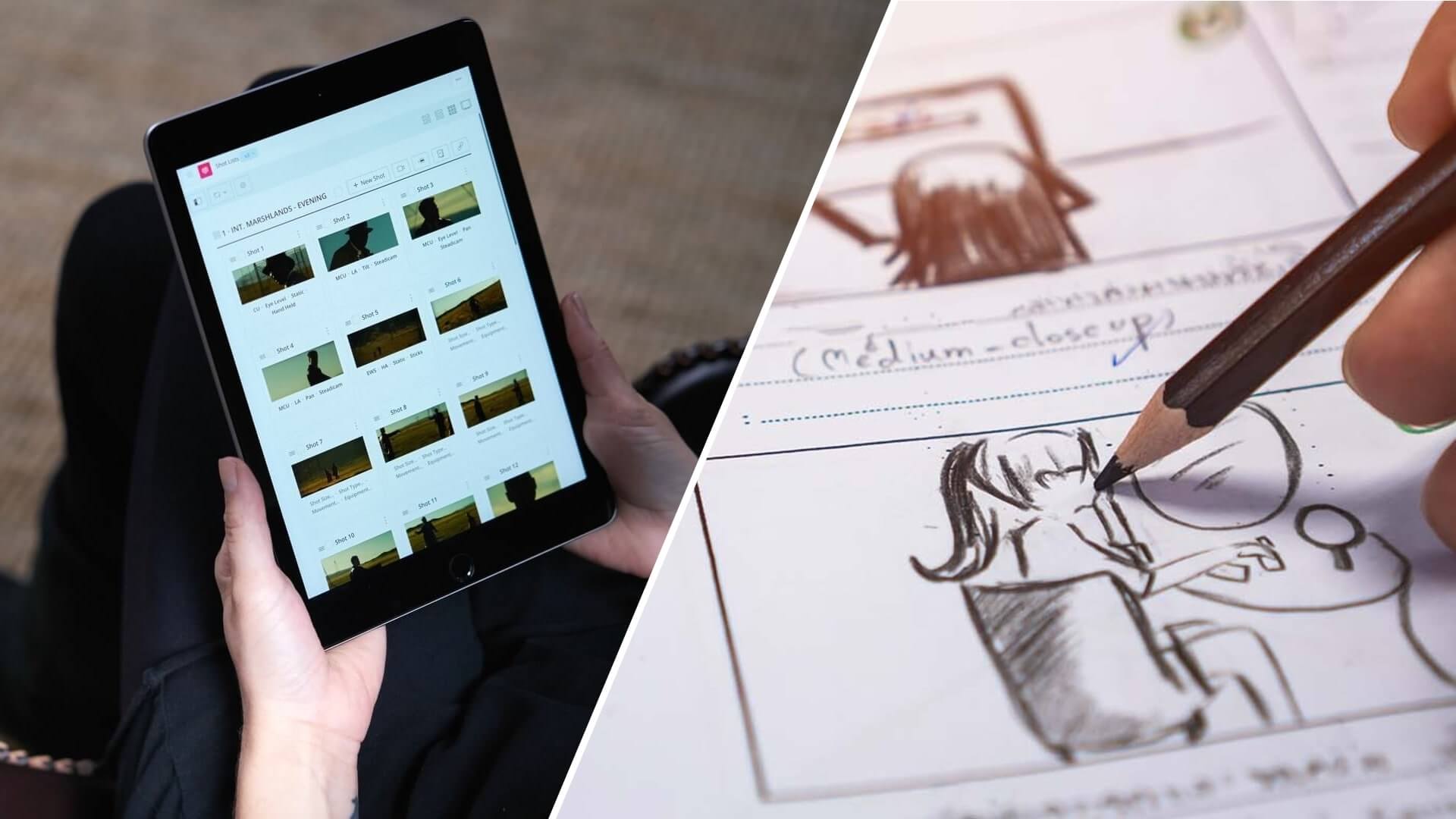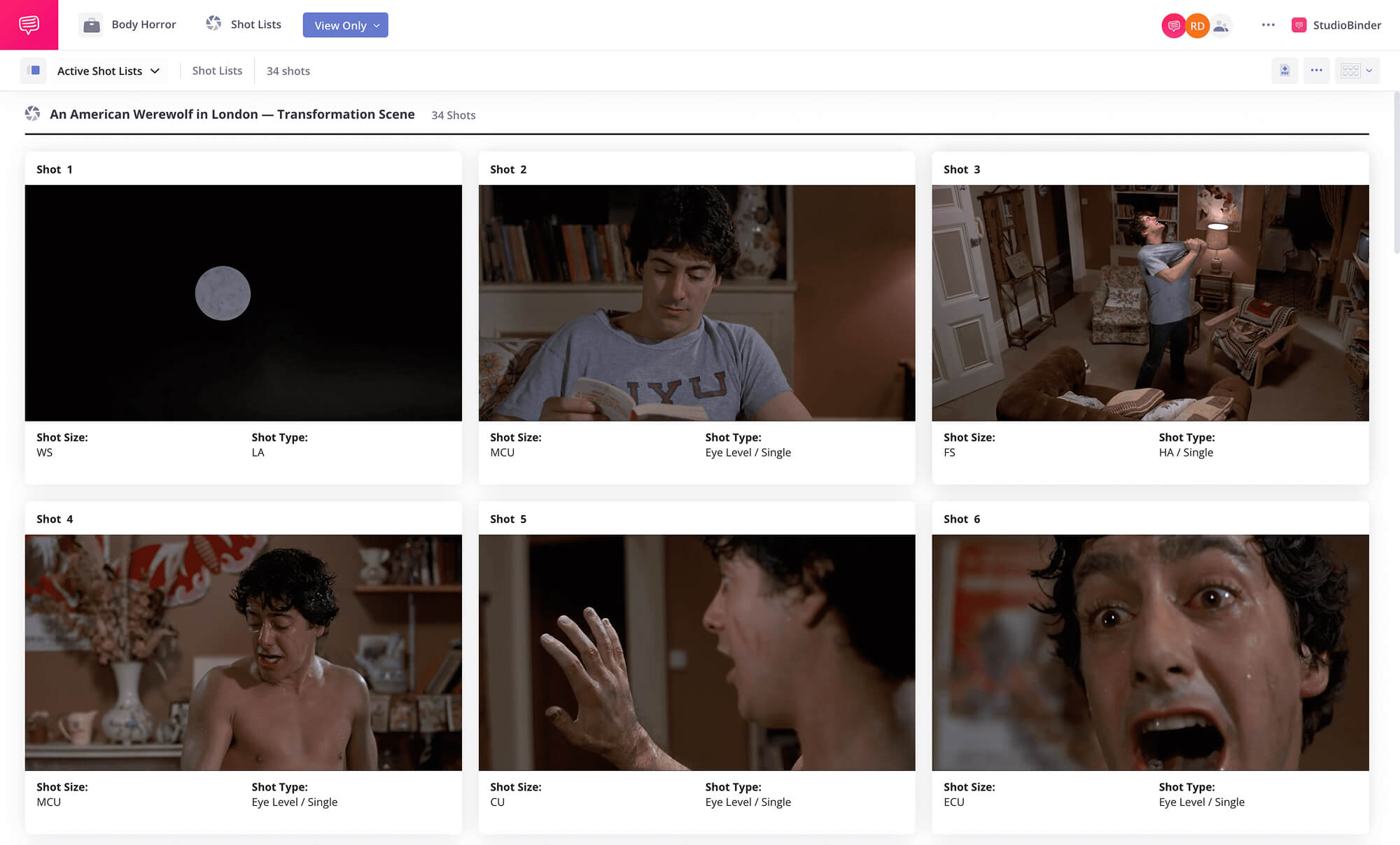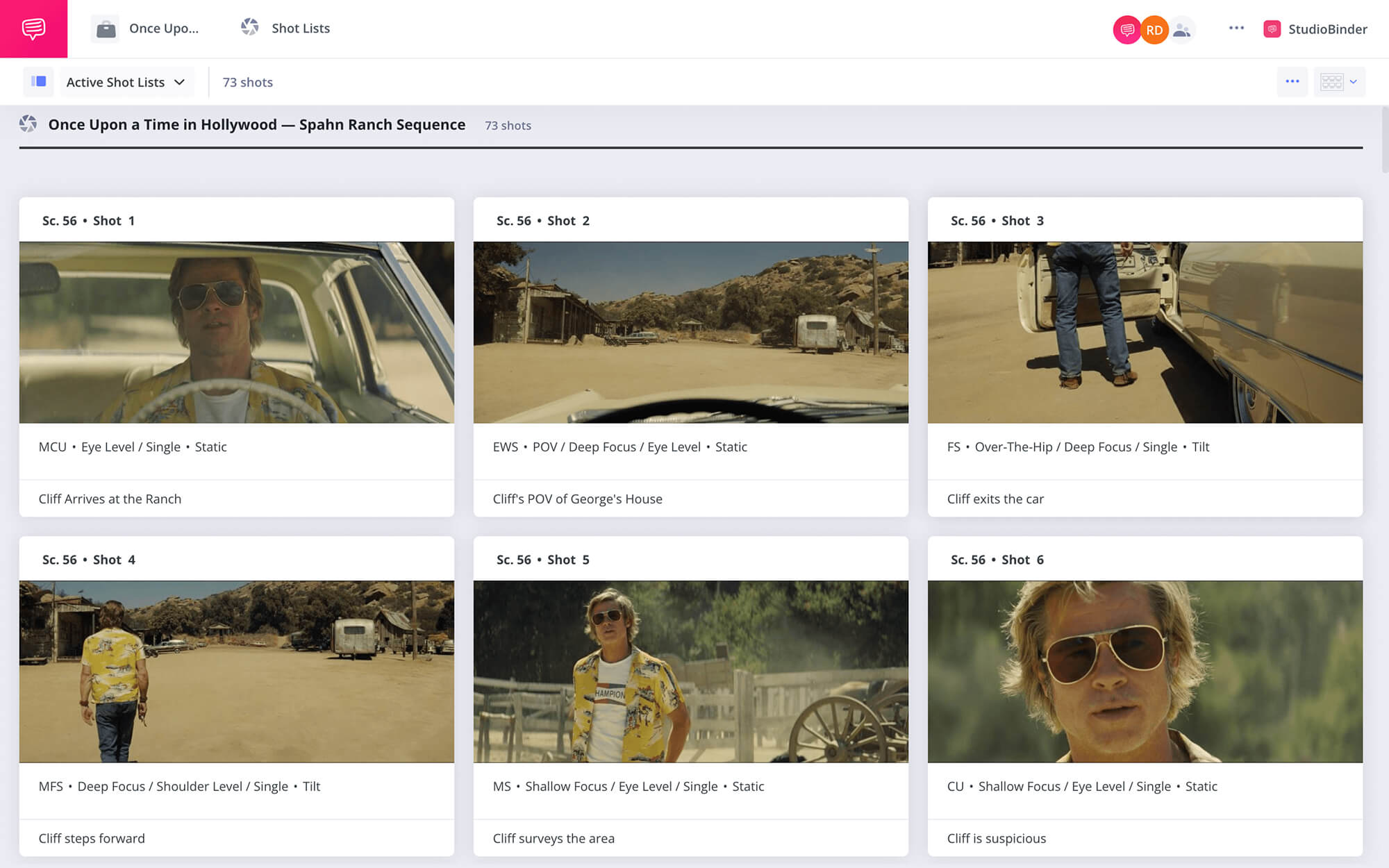Filmmaking is a complex process that involves various stages and meticulous planning. Among the important aspects of filmmaking is the pre-production stage, where planning and organization are done before the actual filming. One of the critical tasks in pre-production is creating a plan for the shots that will be taken. Filmmakers use either shot lists, storyboards or both to plan the visuals of their film. In this blog, we will explore the differences between a shot list vs storyboard and help you determine which is better for your next film project.
Storyboard vs Shot List
First, let’s define shot list
Later in this article, we’ll analyze the differences between a shot list and a storyboard and the value of each tool. Before that, however, let’s dive into the definition of both shot list and storyboard to thoroughly understand each.
SHOT LIST DEFINITION
What is a shot list?
A shot list is a detailed list that outlines all the shots that will be filmed during production. It is usually created by the director, cinematographer, or assistant director in the pre-production stage to ensure a smooth filming process. The shot list often includes information about camera angles, movement, lenses, lighting, and more.
The primary purpose of a shot list is to breakdown the script into individual shots or visual components. The list can help the director coordinate and communicate with the cinematographer, camera operator, and other crew members about the required shots. Additionally, shot lists can be used as a reference during filming to ensure all required shots are captured before moving on to the next scene.
With so many moving parts, having a concrete document stating which shots demand what equipment, and how long shot setups will take, determine so much of the schedule and budget.
SHOT LIST DEFINITION
What is a storyboard?
A storyboard is a visual representation of a film or video project. It is a sequence of illustrations or images that represent each shot, scene, or sequence of the project. Storyboards are used in the pre-production phase of filmmaking to help the director and the rest of the crew visualize and plan the scenes that will be filmed.
A storyboard typically includes sketches or drawn images that show camera angles, shot types, lighting, and other visual details.
Storyboards can also be created digitally using software that allows filmmakers to add images, notes, and other elements to the storyboard. The storyboard helps to communicate the vision of the director to the entire crew, including the camera team, lighting crew, and actors. It is an essential tool for pre-production, as it helps the crew plan and prepare for the shooting of a film or video project.
Shot List vs Storyboard Benefits
Benefits of a shot list
Shot lists have been used in the film industry for quite some time but have evolved alongside technology and filmmaker workflows. They have become more than just a pre-visualization tool, but also a tool that keeps film production organized and efficient.
Softwares like StudioBinder’s free shot listing app have made it easier to create professional, organized shot lists that improve the production of a film. This includes the various shot list abbreviations and camera gear requirements.
In this video, you can see how easy and organized it is to use the app to create your very own shot list.
StudioBinder Free Storyboard Creator • Subscribe on YouTube
Throughout the article, we’ll refer to different cinematography details that are included in a shot list such as camera lens types, camera movements, shot sizes, and more.
Check out the sample shot list we created using StudioBinder below. We broke down the iconic transformation scene in the American Werewolf. Notice the details of each shot that allow filmmakers to customize each shot in their shot list.
StudioBinder shot list example • The Big Lebowski
Shot lists are an incredible tool that contributes to a smooth production and a better-told story. How exactly does a shot list help? Let’s take a look at the main reasons filmmakers use a shot list.
Organization
By creating a shot list, directors can organize the visual components of a film or video project into individual shots. This helps filmmakers to have a clear roadmap on what they plan to shoot, and how each shot belongs within the larger narrative.
After a scene breakdown is created, a shot list helps organize and ensure all parts of the script are covered through the necessary shots. Learning how to breakdown a script is essential for creating an organized shot list.

Using shot lists in pre-production with scene breakdowns
Communication
Shot lists provide a clear and concise communication tool between the director, cinematographer, camera operator, and other members of the crew. With a shared understanding of what needs to be captured, each member can execute their tasks precisely.
Time Management
Shot lists are particularly useful for saving time. Since shot lists help the crew plan and understand the shots better, it helps the production team to shoot in a more structured and organized manner. Thus, shots can be captured more efficiently and thus minimize delays and actors sitting idle, reducing costs due to time constraints and rental equipment costs.

Value of shot list vs storyboard
Efficiency
The crew can give a detailed understanding of the shots to be captured beforehand based on the shot list. This in turn helps the crew to prepare for the right camera equipment whether it is a Steadicam shot or dolly shot. It will also help inform the crew of the lighting required for each type of shot, making the entire production process more efficient and effective.
Avoid mistakes
The shot list can help to avoid mistakes due to missed shots, incorrect camera angles or other aspects that need variation or precision. The shot list can be referred to on the fly to ensure that all shots are captured as intended by capturing a wide variety of angles, movements or shots with different lenses.
Related Posts
Shot List vs Storyboard Benefits
Benefits of a storyboard
To reiterate, a storyboard is a visual representation of a film or video project consisting of a series of drawings or sketches that show each shot of a scene or sequence in a film. We used the free StudioBinder storyboarding app to create a sample storyboard from Once Upon a Time...in Hollywood.
Check out the link below to see how a storyboard differs from a shot list through its visual components.
StudioBinder storyboard example
Due to its visual nature, the main benefits of a storyboard are distinct from that of a shot list. There are plenty of amazing storyboard examples that have led to some of the best films in cinema, so let’s dive into some of the key functions of a storyboard and why they’re valuable.
Visualization
Storyboards provide a visual representation of each shot, allowing the director and DP to see how the shot will look before it is actually filmed, thereby eliminating the guesswork and helping them make better creative decisions.
Here's an example from Jurassic Park.

Storyboards by David Lowery for Steven Spielberg's • Jurassic Park
Communication
Making a storyboard provides a way to communicate visually, and are especially useful for those who are not familiar with the written script. This helps improve communication between the director, cinematographer, production designer, cast, and crew as they can all reference the storyboard to clearly understand what will be captured.
This can be very important when conceptualizing complex scenes such as in the iconic Inception hallway scene in one of Christopher Nolan’s best films. In this video, we look at how Nolan used storyboards to pre visualize the sequence.
How Christopher Nolan Shot the Iconic Inception Hallway Fight Scene • Subscribe on YouTube
Planning
Storyboards allow the director and the cinematographer to better plan and prepare for the production design and thus, make required adjustments before the actual shoot starts. Storyboards can be used to identify potential issues and make any necessary changes before filming begins. This is incredibly helpful when sets are being built and can be designed in a way that elevates or supports the concept of a shot.
Problem-solving
Storyboards can help identify potential problems with the shot that may not have been apparent without visual representation. This could be framing, composition, types of camera movement, etc. The creatives can then work together to resolve the issues before the shoot, reducing costs and time-related errors in production and post-production.
Creativity
Storyboards provide an opportunity to explore different visual options and creative paths. Storyboarding can enhance creativity for the creatives around visual aspects like framing the scene, positioning of objects and props, or how a director might block subjects.
Related Posts
Differences in Pre-production Tools
Shot list vs storyboard differences
While both shot lists and storyboards are valuable tools to use in pre-production and production, there are distinct differences that make them different tools. Let’s take a look at these main differences between a shot list and storyboard.
Format
A shot list is usually a document that lists all the shots to be captured, while a storyboard is a visual representation of each shot in the form of a series of drawings or sketches.

Shot list format examples
Detail Level
Shot lists are typically more detailed than storyboards in terms of specifying technical details like camera movement, camera angles, lighting, and other shooting details.
Storyboards usually focus on visual storytelling and may not include as much technical details such as camera lens types, equipment needed, etc.
Purpose
A shot list is primarily used as a simple and easy-to-use reference for the crew that can be updated on the fly. While a storyboard is used to provide a visual representation of each shot and sequence of shots that will be filmed. Making a storyboard can help directors communicate their vision to the cast and crew and can assist in making creative decisions by offering different visual concepts and options.

Storyboards by William Cameron Menzies for • Gone With the Wind
Production Experience
Shot lists are easier to use by people who already have a lot of film production experience, while storyboards are easier to use by people who are more visually oriented and can be complex and time-consuming to create accurately.
Flexibility
Shot lists are quicker to update on the fly during filming, while storyboards are more rigid and harder to modify once they’ve been created.
Despite these differences, both have their own value. It’s important to remember that you do not have to choose between a shot list and a storyboard.
They are both tools that can be used in the same production. Both will help you in different ways, but of course, every filmmaker operates differently. Understanding the value of each and how they differ will help you determine if you need to create a shot list, storyboard, or both for your production.
Related Posts
Up Next
How to Make a Shot List
Both storyboards and shot list are incredible tools for pre-visualization and pre-production. If you’re looking to create a shot list for your production, we lay out the process step by step in our next article.
Up Next: Making a Shot List →
Showcase your vision with elegant shot lists and storyboards.
Create robust and customizable shot lists. Upload images to make storyboards and slideshows.


